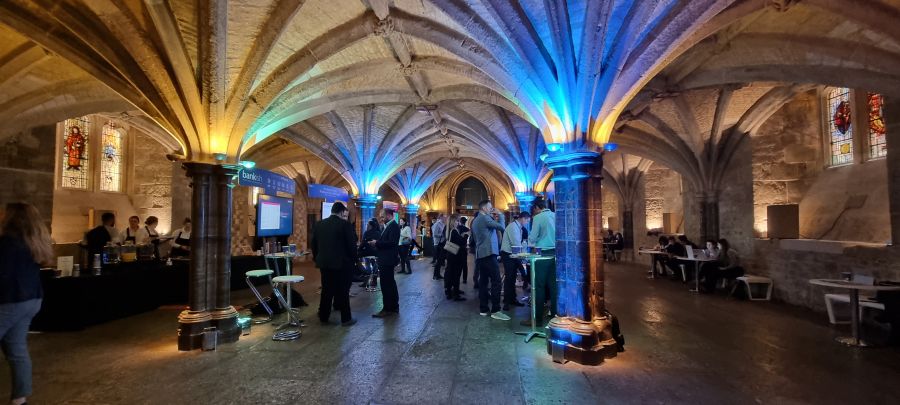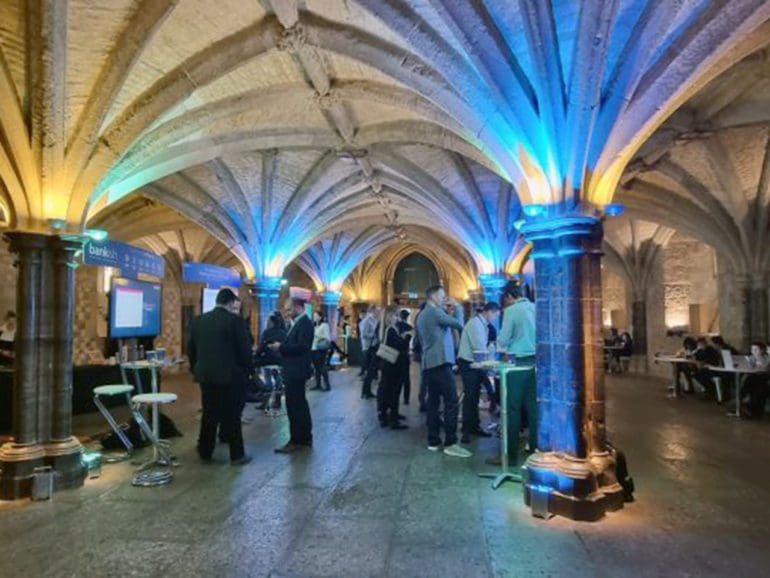In the light of the UK Chancellor of the Exchequer’s recent announcement, which was heavily centered on encouraging innovation of crypto technologies, it seems investment in digital assets is to take a leading role in the future financial landscape.
As development moves further into Web 3 and the use of blockchain, more are turning to digital assets and their opportunities. Although only an estimation due to its volatility, the market’s current valuation stands at around $2 trillion.
At the Innovate Finance IFGS 2022 summit that LendIt attended this week in London, the potential of digital assets was a much-discussed topic.

Digital assets: an attractive investment
One could perceive the attraction of digital assets to be undeniable when regarding the numbers. The NFT market alone skyrocketed to a valuation of $22 billion in 2021, with OpenSea, the first and largest NFT marketplace, operating a trading volume of over $6.5 billion.
Despite this, the question is whether NFTs and digital assets are suitable for all practices. In a panel discussion, Sarah Kocianski, Lead of Strategic insights at Founders Factory, said, “A lot of creators have a lot of great ideas are now saying they want to make an NFT.”
“What we ask businesses is, “Does this need to be an NFT, and if so, what kind of NFT is it?” because people just see it as a good way to get money, whether that’s investors’ money or customers money.”
NFTs, asset tokenization, and cryptocurrencies are increasingly used to streamline digital processes and automation, favored for their perceived security and speed. This is in addition to the crypto assets released by businesses as alternative revenue streams or marketing tools.
“There is a lot more to be done around people understanding what an NFT is, what sort of NFT it is, and whether it’s necessary…the traditional way of doing things done well isn’t necessarily worse.” Kocianski continued.

Gap in knowledge surrounding digital asset investment
Kocianski’s comment highlights the large gap in knowledge about the assets’ capabilities and suitable use cases.
Kocianski spoke of a lack of investor understanding within the industry of digital assets. “I think a lot of the providers of (digital asset investment) services are starting to think about it realistically looking at their client base and thinking, we have quite a lot of people here who don’t know what they are doing and are starting to get into some serious financial trouble.”
“It’s not wholly on the providers; it’s also on the regulators, but providers are starting to think carefully about responsibility and what they are doing and are helping people learn about the whole digital asset industry rather than what investing in digital assets looks like.”
“Having a good investment experience is a good way to diversify generally and just for people to learn about different ways of management.”
Others mirrored this opinion in the panel. Sophia Shluger, Managing Director at the Amber Group, said, “It’s moving very quickly…I think the thing we have to get our head around is the educational piece. A lot of institutional clients are very interested in playing in the space; however, there is a lot of information and first-hand knowledge that needs to be acquired.”
Untapped potential
The digital asset field is vast. Although headlined by Bitcoin and collectible NFTs, the potential for the technology goes a lot further, with innovation leading the way in unearthing and unleashing additional capabilities.
The panel moderator, Lawrence Wintermeyer, the executive co-chair and guarantor of Global Digital Finance (GDF), said, “NFTs are really being used in many different ways. You have art and collectibles, but also there are many ways to use all sorts of digital assets for performance on the back end.”
“It seems to me that in the context of responsible innovation, many people that focus on NFTs recognize the creation of fungible NFTs cross that line into collective securities.”
The evolution of digital assets from Bitcoin to create other utilities, such as layer one and two protocols, smart contracts, and cloud solutions, has opened the sector to other applications that go beyond speculative investment.

Many researchers within the field are exploring these potential applications in more detail with the hope of creating digital assets for philanthropic use. Cathy Mulligan, a Visiting researcher at University College London (UCL), addressed this by saying, “For me, the value of digital assets is perhaps the least interesting thing about this asset class.”
“What is really interesting is its ability to help us reshape some of the roles we have in society around the delivery of goals, for example, sustainable development goals and ESG goals.”
A tool to ‘overthrow the world bank’
The work of Mulligan has brought her to assist the UN’s Secretary General’s office in creating a digital roadmap and implementing technologies to help solve global issues.
Her research has brought her to look at the tokenization of assets as a tool to challenge traditional financing infrastructures underpinning delivery systems of amenities such as water, energy, and connectivity.
“One of the things I would love to do is use these digital assets to overthrow the world bank,” she said. “There is genuine power, leveraging people around the world to almost self-fund these assets, which are critical infrastructures in the delivery of their rights.”
“There is a great opportunity here to challenge some of the ways we think about things … it’s important that we don’t think about them just as money. We can think about them as a way to challenge what money is and the way it can be used in the world.”


